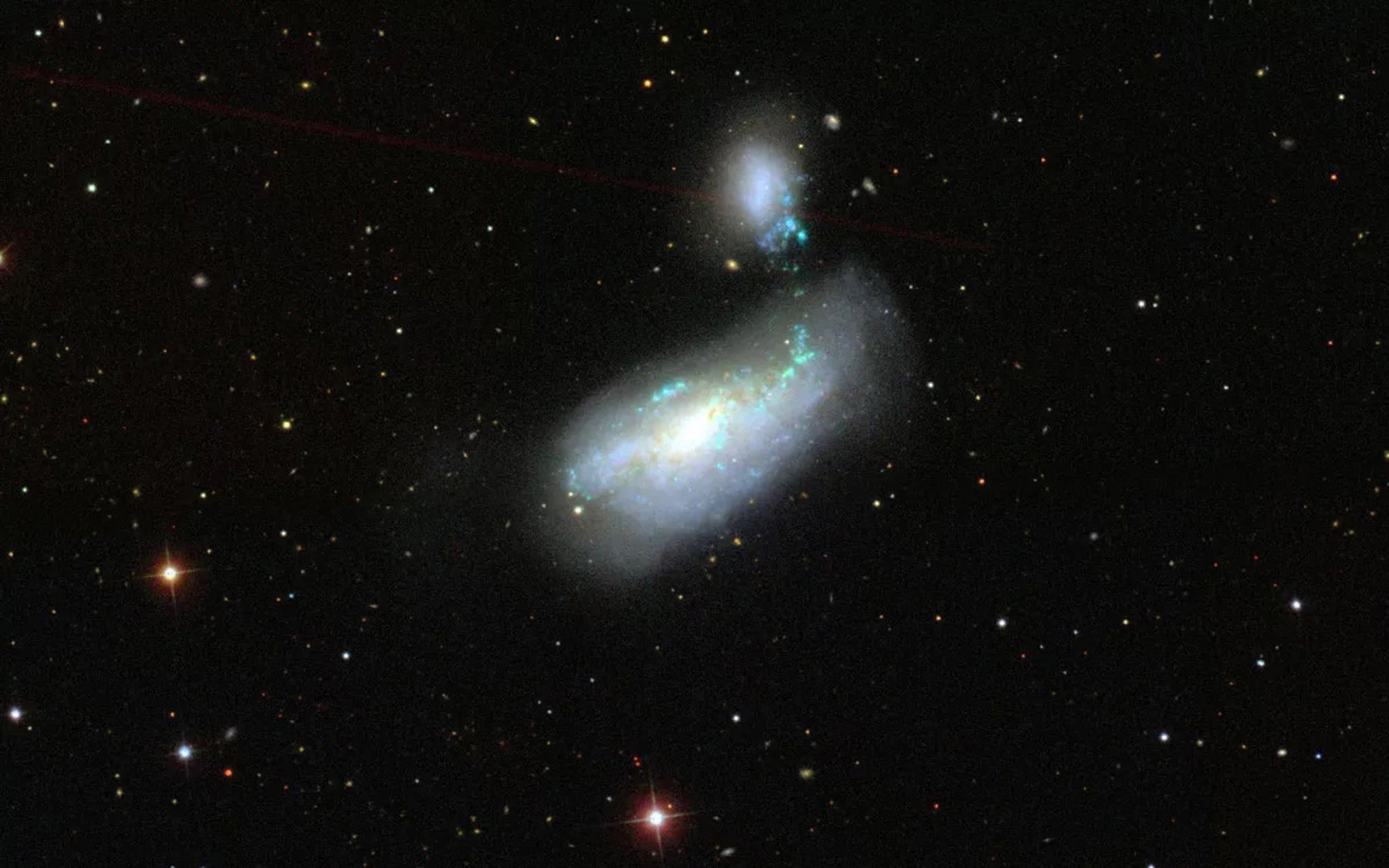
Located just 40′ northwest of 4th-magnitude Chara (Beta [β] Canum Venaticorum), the Cocoon Galaxy (NGC 4490) forms an intriguing pair with neighboring NGC 4485. Both were discovered by William Herschel in 1788 and are listed together as Arp 269.
Studies reveal that sometime in the distant past, NGC 4485 and NGC 4490 collided with each other. We now see the aftermath of the cosmic crash, which totaled both galaxies and left them nearly unrecognizable. NGC 4490 was once a barred spiral, but the clash with NGC 4485 stretched its arms into a chrysalis shape, leading to its nickname the Cocoon Galaxy.
NGC 4485 was also a spiral once, but was so warped by the interaction that nearly any trace of its former self has been erased, and it now lags behind as the two galaxies slowly separate. Hubble images reveal a trail of bright stars and HII extending 24,000 light-years back toward NGC 4490.
The stirred-up, entangled clouds of gas and dust in both galaxies sparked bursts of star formation. The striking red and pink blotches seen here are huge ionized clouds, energized into fluorescence by the ultraviolet energy from hot, newly formed stars that lie nearby.
In 2020, a team of astronomers analyzing infrared images discovered that NGC 4490 has two central cores. The second core was not apparent in visible light due to intervening dust clouds. The team concluded that NGC 4490 is likely a remnant of an even earlier merger with a now-absorbed galaxy.









